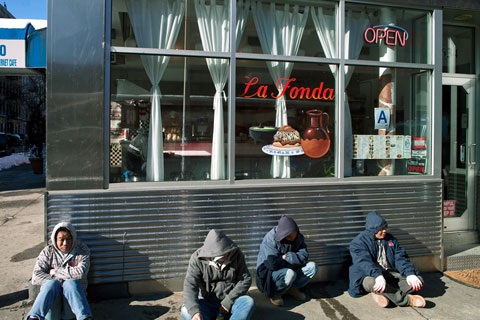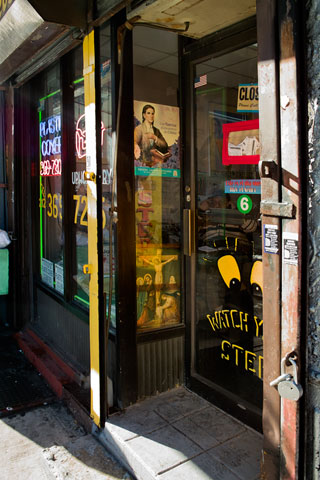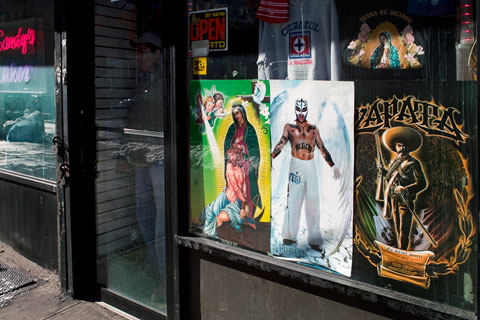
Lexington Avenue and 103rd Street — © Brian Rose
A few photos taken while walking back to the subway after visiting with Sean Corcoran, the photography curator at the Museum of the City of New York. I was at the museum to show him my WTC book and discuss with him publishing and exhibition possibilities. The museum is already committed to showing work relating to the Twin Towers by Camilo Jose Vergara. My previous publisher, Princeton Architectural Press, also cited a book they did ten years ago with Vergara as a reason for passing on my book.
With regard to the museum, I can’t exactly complain given that I only put together my book about a month ago, and I am grateful to Sean Corcoran for his ongoing enthusiastic support. There are other exhibition options. But it’s hard for me to run up against Vergara twice, however accidentally, since I do not consider our work very closely related. There is, superficially, the documentation of places over long periods of time, such as the work he has done in Harlem and other low income neighborhoods, but that’s as far as it goes.
Vergara works primarily with a small camera, repeatedly visiting the same locations and views, measuring change in a cumulative brick by brick process. He is as much sociologist as photographer.

Lexington Avenue between 103rd and 104th Streets — © Brian Rose

Lexington Avenue between 103rd and 104th Streets — © Brian Rose
The projects I’ve done came about more organically in most cases, starting out in a limited scope, and then becoming multi-phased explorations. My Iron Curtain work, for instance, began as a single trip along the former borderline, but turned into a near life-long journey, an investigation of the landscape connected to larger geopolitical developments. WTC is comprised of a number of discreet, sometimes overlapping, series of images made over the course of 32 years. I think of the book as the visual equivalent of a musical composition in which the theme is tentatively introduced in the opening, and then, in steps, develops narratively and dynamically. Both the Iron Curtain and WTC projects end up as meditations on things that no longer exist, structures of symbolic import, that remain held in memory, both personal and collectively.
At this point it looks unlikely that WTC will get published other than as a Blurb book available at a relatively high price. The photo books that will get published will mostly reprise, painfully–sometimes gratuitously–images of exploding planes, collapsing buildings, the heroes in the pit. My book takes a longer view. Maybe it will reach a larger public after the dust of that day clears, yet again.
Sorry to hear no deal yet on the WTC book. Should I come across some unexpected funds I will be among those who jump on your Blurb book. The photos far surpass, in my opinion, Vergara’s photos much beyond the differences in resolution, camera size, etc. but in vision too. I wish you the best in finding an eventual publisher.
Best to wait a little while. I’ll probably add a few images to the book from the recent two days of shooting. Once I feel like the thing is really done, I’ll let everyone know.
It’s Camilo Jose Vergara
Fixed.